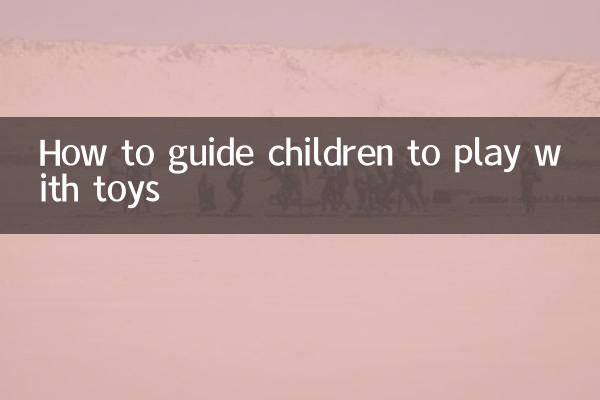How to guide children playing with toys: Combining scientific methods with hot topics
In today's era of information explosion, how to scientifically guide children to play with toys has become the focus of parents' attention. In combination with the popular topics and hot contents of the entire network for the past 10 days, we have compiled a set of structured and data-based guidance methods to help parents promote their children's growth more efficiently in parent-child interactions.
1. A list of recent popular toys and education topics

| Ranking | Hot Topics | Discussion hot topic | Related age groups |
|---|---|---|---|
| 1 | STEM toys guide scientific thinking | 985,000 | 3-12 years old |
| 2 | Control of electronic toy usage duration | 762,000 | 5-15 years old |
| 3 | The social value of traditional toys | 658,000 | 2-8 years old |
| 4 | Toy storage and sense of responsibility cultivation | 543,000 | 4-10 years old |
| 5 | Language development of role-playing toys | 427,000 | 3-6 years old |
2. Age-segment guidance strategy
1.Infancy and toddler years old
• Sensory stimulation priority: choose toys with bright colors and diverse textures
• Parents’ full-time companionship: Demonstrate the correct way to play toys
• Avoid complex toys: Single-function toys are more conducive to concentration cultivation
2.Preschool age 3-6 years old
• Introducing role-playing: Promoting social skills development
• Encourage independent choice: develop decision-making skills
• Set storage rules: establish a sense of order
3.School-age over 6 years old
• Focus on STEM toys: Cultivate logical thinking
• Guide team games: Enhance cooperation awareness
• Establish time management: Control the use of electronic toys
3. Analysis of educational value of popular toy types
| Toy Type | Core ability development | Recommended duration/day | Parental participation |
|---|---|---|---|
| Building blocks | Space thinking, creativity | 30-60 minutes | medium |
| Electronic learning machine | Language ability, cognitive development | ≤30 minutes | Low |
| Role Playing Set | Social skills, empathy | 20-40 minutes | high |
| Puzzle class | Problem solving, focus | 15-30 minutes | Medium low |
| Outdoor sports toys | Big movement, coordination | 60+ minutes | high |
4. Common misunderstandings and scientific suggestions for parents
1.Misconception: The more toys, the better
• Data shows that 3-5 kinds of toys are provided at the same time and the best results are
• Scientific practice: Regular rotation of toys to keep fresh
2.Misconception: Premature introduction of electronic toys
• Research shows that exposure to electronic devices before the age of 2 affects vision development
• Scientific advice: Avoid using electronic toys alone before the age of 3
3.Misconception: Excessive intervention in the game process
• Observation and discovery: Moderate "white space" can stimulate creativity
• Correct way: observe first and then guide, ask questions instead of command
5. The golden rule of toy guidance
1.Safety first principle: Check the integrity of the toy regularly
2.Interest-oriented principle: Respect your child's choice preferences
3.Ladder development principle: Adjust the difficulty of toys according to age
4.The principle of extension of life: Combining toys with life scenes
Conclusion: Toys are a window for children to understand the world. Scientific guidance can not only enhance the value of games, but also promote diversified and intelligent development. It is recommended that parents pay attention to toy safety warnings regularly, and flexibly adjust guidance strategies based on their children's personality characteristics, so that playing becomes a natural process of happy learning.

check the details

check the details